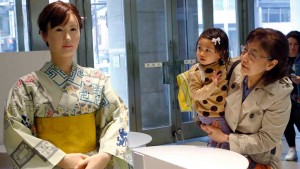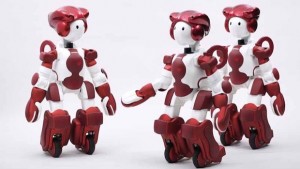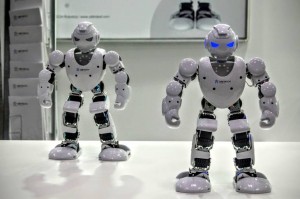The Financial Times has taken an interest in Japanese robotics and produced an interesting video highlighting recent developments. In particular, it examines the line that divides the socially practical from the so-called uncanny Valley.
These days it can seem at times that Japanese robotics seem to produce either one of two types of machine: cute ones that are meant to be personal companions, or scary ones that are bold yet doomed attempts to replace humans with androids.
On the cute side we recently saw Hitachi’s latest EMIEW robot and TABO, the world’s first iPad screen robot. Many of these are small in size. Perhaps most notably has been Pepper, co-developed by Softbank and who seems to be everywhere these days. The FT, though, concludes that Pepper “is more like a demanding child, burbling incessantly, demanding our attention and firing out questions to which it does not necessarily want an answer.”

On the other side of the coin are uneasily human-like robots like those developed by Hiroshi Ishiguro or the android guide, Aiko Chihira, hired by Mitsukoshi department store.
Regardless of disquiet from some, an android based on Matsuko Deluxe co-hosted a TV show for several months while one of Ishiguro’s androids has been performing in theater plays with live actors.
But is this all just a gimmick?
Technological advances mean that robots are increasing looking and behaving like humans. But can these machines ever match their human counterparts? FT’s Richard Waters and Kana Inagaki discover the latest humanoid robots and ask whether these machines can truly enhance society.
Of course, these questions are also staples of science fiction, as illustrated by recent movies like Ex Machina, Chappie and Automata. And the debate is unlikely to die down any time soon.
























